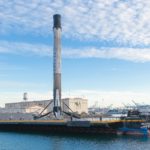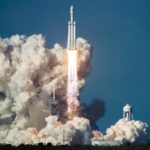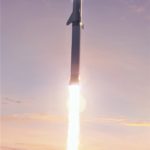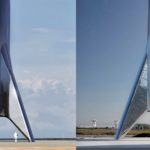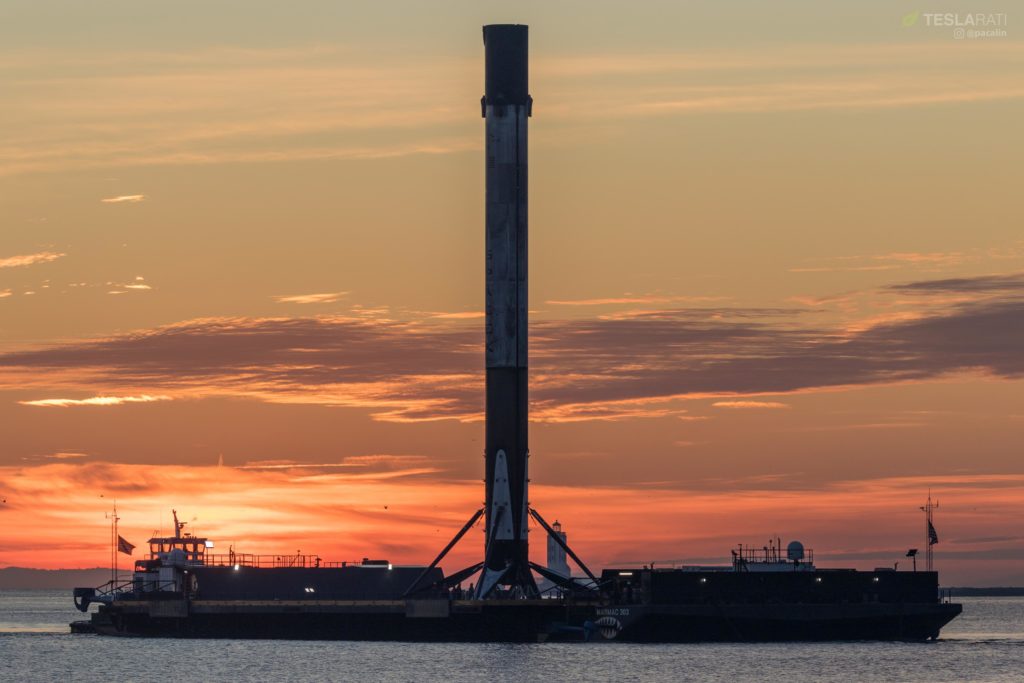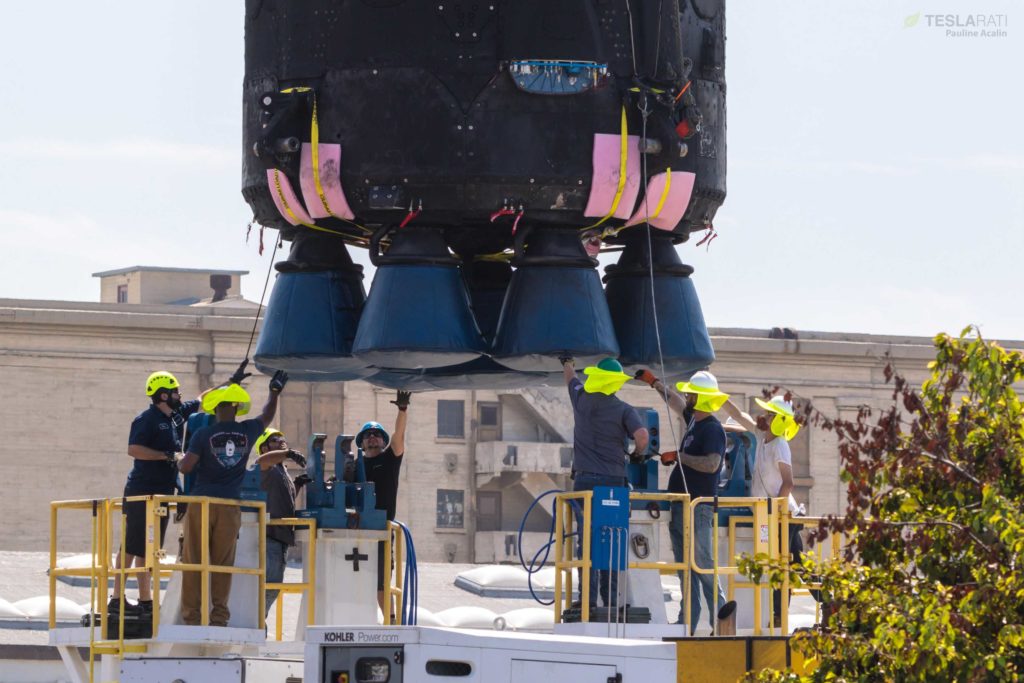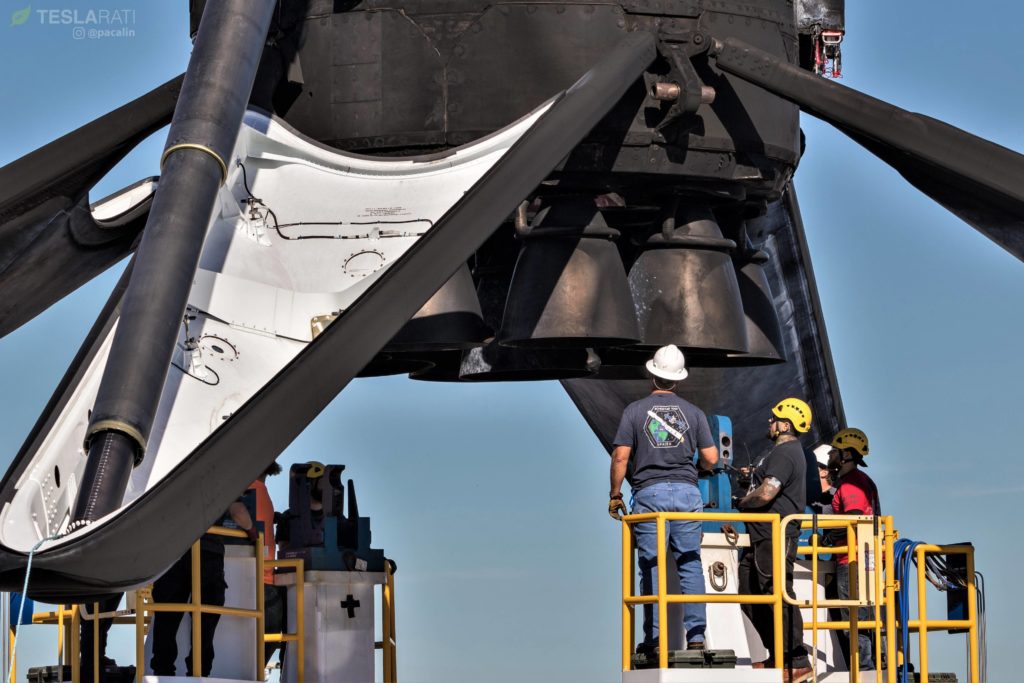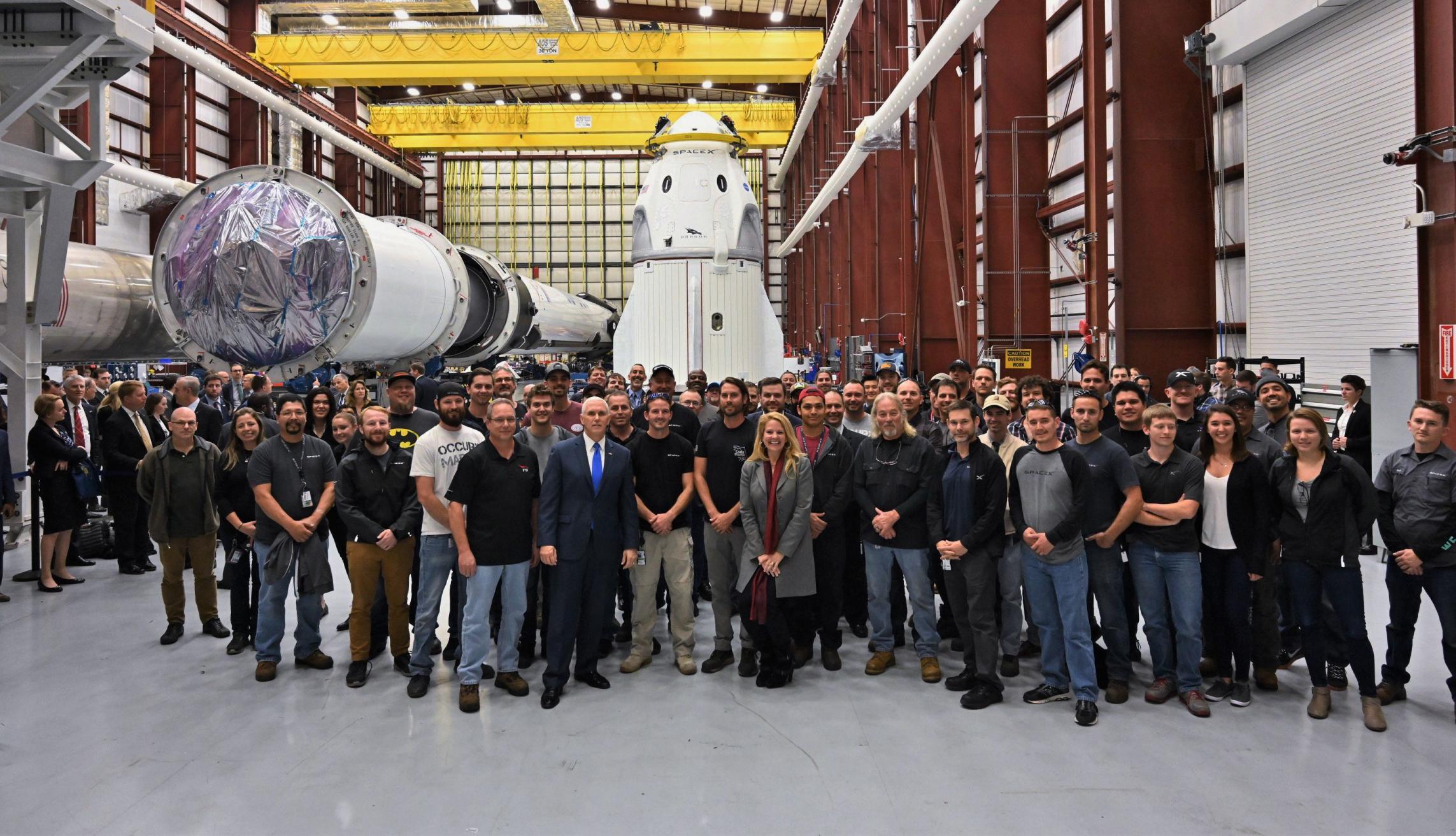

News
SpaceX lays off 10% of staff by email as Falcon Heavy, BFR, and Starlink ramp up
In an unusual move for a privately-held company that raised $500M-750M in the last six months alone and is the 2nd or 3rd most-valuable VC-backed entity in the United States (~$30B), SpaceX abruptly announced a decision to lay off ~10% of its workforce of 7,000+, effective immediately as of January 11th.
Although layoffs are often a necessary evil in particularly competitive industries or underperforming companies, SpaceX is not exactly a strong fit for either characteristic. The company also opted for a truly bizarre and impersonal layoff method so unfriendly that several employees described it feeling like a corporate “Hunger Games” or a “purge”.
https://twitter.com/seanbhart/status/1084139223760945152
Over the past six or so months, a number of reports – most recently confirmed by SEC filings showing ~$270M of $500M raised – noted that SpaceX was seeking considerable investment and capital influx in the form debt (a leveraged loan) and equity sales to the tune of $250M (loan) and $500M (equity) after some back and forth with investors and banks and additional fine-tuning. The terms of SpaceX’s 2018 fundraises are unknown but Bloomberg did acquire information suggesting that the company was only profitable or break-even with after a range of very specific and dubious accounting decisions. Put more bluntly, SpaceX did not demonstrate actionable profitability to investors during their 2018 pitches.
“[SpaceX showed] positive earnings before interest, taxes, depreciation, and amortization of around $270 million for the twelve months through September … But that’s because it included amounts that customers had prepaid and because it excluded costs related to non-core research and development. Without those adjustments, earnings for the period were negative.” – Bloomberg, 19 November 2018
However, the fact of the matter is that SpaceX’s profitability is and has long been nearly irrelevant as long as the company was still able to convince investors that it was wisely investing its funds in potentially revolutionary present and future projects like Falcon Heavy, reusable rockets, BFR, and Starlink. Essentially, if SpaceX could show that they could be profitable if they wanted to be, investors were willing to swallow unusual risks in return for prestige and a potentially vast payout down the road. The decision to lay off 10% of the company’s workforce immediately after raising anywhere from $500-750M could indicate that layoffs were either directly or indirectly related to the terms of its fundraising rounds.
When you're talking about 850 layoffs across the company, there's no way even the best company at hiring/firing decisions is going to avoid making tons of mistakes about who they kept and who they let go.
— Jonathan A. Goff (@rocketrepreneur) January 12, 2019
Notably, some basic back-of-the-napkin estimates would suggest that cutting 10% (say 700-800 employees) at an average salary (or equivalent hourly pay) of ~$90K/year* with an average overhead of 30% would reduce SpaceX’s operational costs by $80-100M annually, potentially enough to sway the above financial account enough to show a small annual profit or at least allow the company to break even. Put frankly, $80-100M per year is not nearly enough to plausibly fund SpaceX’s BFR and Starlink development programs at anything close to the ambitious schedules CEO Elon Musk has laid out for the company, including orbital BFR launches as early as 2020 and getting Starlink to initial operational status around the same time (2020-2021).
- Falcon 9 Block 5 booster B1049. (Pauline Acalin)
- Falcon Heavy clears the tower. (Photo: Tom Cross/Teslarati)
- BFR (2018) breaks through a cloud layer shortly after launch. (SpaceX)
- SpaceX’s Starhopper seen in a January render and a January photo. (SpaceX/Elon Musk)
- One of the first two prototype Starlink satellites separates from Falcon 9’s upper stage, February 2018. (SpaceX)
- SpaceX’s first two Starlink prototype satellites are pictured here before their inaugural launch, showing off a thoroughly utilitarian bus and several advanced components. (SpaceX)
However, saving ~$100M annually might be enough to sway investors that are less prestige-hungry and more conservative to bet on a successful but still relatively high-risk launch company. To be even more generous, one could assume that ~800 employees were strategically cut to remove entire internal groups or departments no longer needed, perhaps doubling or tripling the annual savings to $200M-$300M, still not even close to enough money to fund more than 10-20% of expected BFR and Starlink capex.
In September 2018, CEO Elon Musk estimated the new rocket would cost ~$5B to develop (no less than $2B, no more than $10B) on its own, entirely excluding the $10B COO/President Gwynne Shotwell estimated SpaceX’s Starlink satellite internet constellation would cost to complete in April 2018. Working on profits of less than $300M a year, it would take SpaceX decades of stable earnings to foot that collective $12B-20B bill.
“To continue delivering for our customers and to succeed in developing interplanetary spacecraft and a global space-based Internet, SpaceX must become a leaner company. Either of these developments, even when attempted separately, have bankrupted other organizations. This means we must part ways with some talented and hardworking members of our team. We are grateful for everything they have accomplished and their commitment to SpaceX’s mission. This action is taken only due to the extraordinarily difficult challenges ahead and would not otherwise be necessary.” – SpaceX, January 11
* (Source: Payscale)

A new level of “counterintuitive”
Regardless of whether SpaceX had sincere and angelic motivations for these layoffs (it’s nearly impossible to know), the single most unpleasant aspect of the whole ordeal is how the company managed it and communicated with employees. According to comments and hints from a dozen or more employees, the process began with next to no official warning around lunchtime on Friday, January 11th. Employees attended an all-hands meeting where they were told in frank terms that a major portion of the company – those deemed to be lower performers – would be laid off within 24 hours. All 7000+ employees were told around the same time.
The catch: nobody was told who exactly would be cut – instead, SpaceX would force every single employee to leave work early on Friday and spend 12-24 hours in total uncertainty until an unspecified time on Saturday, when they were – in theory – supposed to receive an email telling them whether or not they still had a job waiting for them on Monday. In many cases, workers were forced to call a number provided by SpaceX and ask the company themselves if they still had jobs, not even receiving the absolute minimum courtesy of some sort of call or notification. Whether the given employee was five months or five years senior, the process was identical – ~24 hours of avoidable existential uncertainty followed by an automated email or phone call that you had to make yourself.
Nobody was offered a clear explanation as to why they were chosen out of all SpaceX employees. Workers who had given their heart, soul, blood, sweat, and tears to SpaceX for more than half a decade were – very literally – fired over email without the simplest explanation and told to not return to work unless returning company property, effective immediately. Thanks to California’s WARN Act protections, all laid off employees in California will thankfully be paid for two additional months (until March 11, 2019) to support job searching and re-training.
- A bittersweet sunrise as Falcon 9 B1049 arrives in port. (Pauline Acalin)
- Workers process Falcon 9 B1048 after recovery. (Pauline Acalin)
- Workers process Falcon 9 B1046 after the booster’s third flawless launch and landing in seven months. (Pauline Acalin)
- SpaceX recovery technicians work on Falcon 9 with similar cherry-picker lifts, offering a sense of scale of the new Starship water tower. (Pauline Acalin)
It’s impossible to know who exactly within SpaceX thought this method of layoffs was preferable to something at least a modicum more humane. It’s equally unclear why these layoffs are happening now, and SpaceX’s official statement appears to be an unsatisfactory half-answer at best. To the 90% that remain, one can only wish them the best and hope that those 10% cut from the company were not all as essential as some of them seem to have been. In the meantime, it appears that SpaceX will continue to push ahead in attempts to improve Falcon 9 reusability, field the next Falcon Heavy, build out and launch Starlink, and develop BFR.
Some of those at SpaceX responsible for enabling the company’s many, many extraordinary achievements hopefully still remain and will be able to ensure that the company keeps heading down the right paths in spite of major speedbumps like this. If you or anyone you know knows someone who works at SpaceX or have been inspired by the company’s mission and many successes in spite of the odds, make sure to be cognizant and appreciative of the tens or hundreds of thousands of rewarded (and unrewarded) hours of hard work that go into every single major and minor SpaceX achievement. To any employees reading, thank you for your dedication and keep fighting the hard fight.
Happy Labor Day! We feel so lucky to work with such an awesome team @SpaceX. pic.twitter.com/aXQXN3fGlA
— SpaceX (@SpaceX) September 3, 2013
News
Tesla UK sales see 14% year-over-year rebound in June: SMMT data
The SMMT stated that Tesla sales grew 14% year-over-year to 7,719 units in June 2025.

Tesla’s sales in the United Kingdom rose in June, climbing 14% year-over-year to 7,719 units, as per data from the Society of Motor Manufacturers and Traders (SMMT). The spike in the company’s sales coincided with the first deliveries of the updated Model Y last month.
Model Y deliveries support Tesla’s UK recovery
Tesla’s June performance marked one of its strongest months in the UK so far this year, with new Model Y deliveries contributing significantly to the company’s momentum.
While the SMMT listed Tesla with 7,719 deliveries in June, independent data from New AutoMotive suggested that the electric vehicle maker registered 7,891 units during the month instead. However, year-to-date figures for Tesla remain 2% down compared to 2024, as per a report from Reuters.
While Tesla made a strong showing in June, rivals are also growing. Chinese automaker BYD saw UK sales rise nearly fourfold to 2,498 units, while Ford posted the highest EV growth among major automakers, with a more than fourfold increase in the first half of 2025.
Overall, the UK’s battery electric vehicle (BEV) demand surged 39% to to 47,354 units last month, helping push total new car sales in the UK to 191,316 units, up 6.7% from the same period in 2024.
EV adoption accelerates, but concerns linger
June marked the best month for UK car sales since 2019, though the SMMT cautioned that growth in the electric vehicle sector remains heavily dependent on discounting and support programs. Still, one in four new vehicle buyers in June chose a battery electric vehicle.
SMMT Chief Executive Mike Hawes noted that despite strong BEV demand, sales levels are still below regulatory targets. “Further growth in sales, and the sector will rely on increased and improved charging facilities to boost mainstream electric vehicle adoption,” Hawes stated.
Also taking effect this week was a new US-UK trade deal, which lowers tariffs on UK car exports to the United States from 27.5% to 10%. The agreement could benefit UK-based EV producers aiming to expand across the country.
News
Tesla Model 3 ranks as the safest new car in Europe for 2025, per Euro NCAP tests
Despite being on the market longer than many of its rivals, the Tesla Model 3 continues to set the bar for vehicle safety.

The Tesla Model 3 has been named the safest new car on sale in 2025, according to the latest results from the Euro NCAP. Among 20 newly tested vehicles, the Model 3 emerged at the top of the list, scoring an impressive 359 out of 400 possible points across all major safety categories.
Tesla Model 3’s safety systems
Despite being on the market longer than many of its rivals, the Tesla Model 3 continues to set the bar for vehicle safety. Under Euro NCAP’s stricter 2025 testing protocols, the electric sedan earned 90% for adult occupant protection, 93% for child occupant protection, 89% for pedestrian protection, and 87% for its Safety Assist systems.
The updated Model 3 received particular praise for its advanced driver assistance features, including Tesla’s autonomous emergency braking (AEB) system, which performed well across various test scenarios. Its Intelligent Speed Assistance and child presence detection system were cited as noteworthy features as well, as per a WhatCar report.
Other notable safety features include the Model 3’s pedestrian-friendly pop-up hood and robust crash protection for both front and side collisions. Euro NCAP also highlighted the Model 3’s ability to detect vulnerable road users during complex maneuvers, such as turning across oncoming traffic.
Euro NCAP’s Autopilot caution
While the Model 3’s safety scores were impressive across the board, Euro NCAP did raise concerns about driver expectations of Tesla’s Autopilot system. The organization warned that some owners may overestimate the system’s capabilities, potentially leading to misuse or inattention behind the wheel. Even so, the Model 3 remained the highest-scoring vehicle tested under Euro NCAP’s updated criteria this year.
The Euro NCAP’s concerns are also quite interesting because Tesla’s Full Self-Driving (FSD) Supervised, which is arguably the company’s most robust safety suite, is not allowed for public rollout in Europe yet. FSD Supervised would allow the Model 3 to navigate inner city streets with only minimal human supervision.
Other top scorers included the Volkswagen ID.7, Polestar 3, and Geely EX5, but none matched the Model 3’s total score or consistency across categories. A total of 14 out of 20 newly tested cars earned five stars, while several models, including the Kia EV3, MG ZS, and Renault 5, fell short of the top rating.
Elon Musk
Why Tesla’s Q3 could be one of its biggest quarters in history
Tesla could stand to benefit from the removal of the $7,500 EV tax credit at the end of Q3.

Tesla has gotten off to a slow start in 2025, as the first half of the year has not been one to remember from a delivery perspective.
However, Q3 could end up being one of the best the company has had in history, with the United States potentially being a major contributor to what might reverse a slow start to the year.
Earlier today, the United States’ House of Representatives officially passed President Trump’s “Big Beautiful Bill,” after it made its way through the Senate earlier this week. The bill will head to President Trump, as he looks to sign it before his July 4 deadline.
The Bill will effectively bring closure to the $7,500 EV tax credit, which will end on September 30, 2025. This means, over the next three months in the United States, those who are looking to buy an EV will have their last chance to take advantage of the credit. EVs will then be, for most people, $7,500 more expensive, in essence.
The tax credit is available to any single filer who makes under $150,000 per year, $225,000 a year to a head of household, and $300,000 to couples filing jointly.
Ending the tax credit was expected with the Trump administration, as his policies have leaned significantly toward reliance on fossil fuels, ending what he calls an “EV mandate.” He has used this phrase several times in disagreements with Tesla CEO Elon Musk.
Nevertheless, those who have been on the fence about buying a Tesla, or any EV, for that matter, will have some decisions to make in the next three months. While all companies will stand to benefit from this time crunch, Tesla could be the true winner because of its sheer volume.
If things are done correctly, meaning if Tesla can also offer incentives like 0% APR, special pricing on leasing or financing, or other advantages (like free Red, White, and Blue for a short period of time in celebration of Independence Day), it could see some real volume in sales this quarter.
You can now buy a Tesla in Red, White, and Blue for free until July 14 https://t.co/iAwhaRFOH0
— TESLARATI (@Teslarati) July 3, 2025
Tesla is just a shade under 721,000 deliveries for the year, so it’s on pace for roughly 1.4 million for 2025. This would be a decrease from the 1.8 million cars it delivered in each of the last two years. Traditionally, the second half of the year has produced Tesla’s strongest quarters. Its top three quarters in terms of deliveries are Q4 2024 with 495,570 vehicles, Q4 2023 with 484,507 vehicles, and Q3 2024 with 462,890 vehicles.
-

 Elon Musk4 days ago
Elon Musk4 days agoTesla investors will be shocked by Jim Cramer’s latest assessment
-

 News1 week ago
News1 week agoTesla Robotaxi’s biggest challenge seems to be this one thing
-

 Elon Musk2 weeks ago
Elon Musk2 weeks agoFirst Look at Tesla’s Robotaxi App: features, design, and more
-

 News2 weeks ago
News2 weeks agoSpaceX and Elon Musk share insights on Starship Ship 36’s RUD
-

 News2 weeks ago
News2 weeks agoWatch Tesla’s first driverless public Robotaxi rides in Texas
-

 News1 week ago
News1 week agoWatch the first true Tesla Robotaxi intervention by safety monitor
-

 News2 weeks ago
News2 weeks agoTesla has started rolling out initial round of Robotaxi invites
-

 Elon Musk2 weeks ago
Elon Musk2 weeks agoTesla to launch in India in July with vehicles already arriving: report

